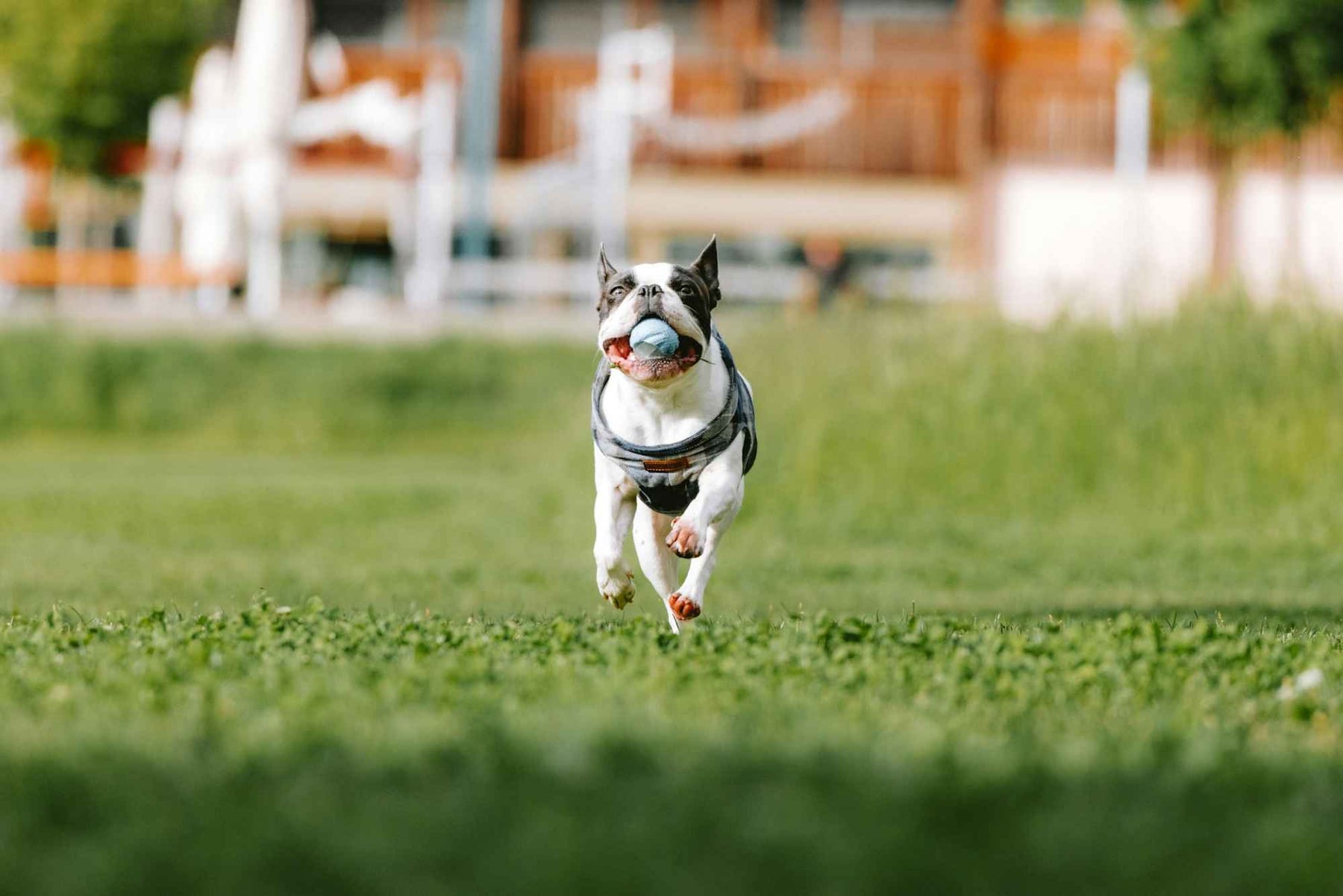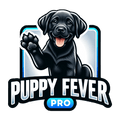737-215-3211

How to Clean Dog Teeth Without Brushing?
Ever tried brushing a dog's teeth only to end up wrestling your puppy instead of cleaning anything? Maybe you managed to smear some toothpaste around their mouth before giving up.
Dogs don't always appreciate dental hygiene. Some dogs act like tooth brushing is their mortal enemy. And who can blame them? It's invasive, uncomfortable, and tastes pretty strange, even with those beef, liver, or chicken-flavored toothpastes.
Still, ignoring your dog's dental health isn't an option. Over 80% of dogs older than three deal with some form of oral hygiene problem. Bad breath, sore gums, and tooth loss are no fun for either of you. But don't feel guilty if regular tooth brushing hasn't worked out. Plenty of pet owners struggle with the exact same thing.
But brushing isn’t the only path to healthier teeth. This guide will walk you through practical, vet-backed alternatives to the toothbrush. They're realistic, achievable, and your dog might even enjoy a few.
Can You Clean Dog Teeth Without a Toothbrush?
We've always been told that tooth brushing is the gold standard. And that's partly true. Brushing removes plaque, slows tartar buildup, and reduces the risk of gum disease. It’s the easiest way to maintain healthy teeth and fresh breath and avoid toothache, tooth decay, tooth loss, and gingivitis, for humans and dogs alike.
But brushing your dog's teeth can feel impossible. Maybe your dog squirms, bites down on the brush, or just flat-out refuses to cooperate. It happens. And if you're here reading this, it's probably because you've tried and failed at traditional teeth cleaning.
While tooth brushing might be ideal, it's not the only way. There are proven alternatives that genuinely help keep your dog's mouth healthy. They're practical, low-stress, and backed by vets.

According to the American Veterinary Medical Association, by the age of three, over 80% of dogs show signs of dental disease. Ignoring the problem won't make it disappear. Even if you can't brush, doing something is always better than doing nothing.
7 Effective Ways to Keep Your Dog’s Teeth Clean Without Brushing
Brushing isn’t the only way to keep your dog’s mouth in decent shape. Plenty of dog owners skip the brush and still manage to prevent stinky breath, sore gums, and dental disease.
The trick? You’ve got to replace brushing with something that helps. Random treats won’t cut it. And skipping dental care altogether just means you’ll pay for it later.
There are several simple, science-backed ways to clean your dog’s teeth without a toothbrush. You don’t need fancy routines or expensive gadgets. Just a few smart swaps and habits.
1. Give Them the Right Chews
Dogs love to chew. The right kind of chew can do more than just keep them busy. They can scrape away plaque before it hardens into tartar. Their texture helps rub along the gumline, and some contain ingredients that contain minerals and vitamins to support oral health.
But not all chews are created equal. Look for ones approved by the Veterinary Oral Health Council (VOHC). That little seal means the chew’s been tested and shown to make a difference.
Keep in mind: aggressive chewers might break off large chunks, which can be a choking risk. Supervise at first to see how your dog handles it.
2. Try Raw Veggies

Crunchy veggies like carrots and celery aren’t just healthy snacks, they’re also decent tooth scrubbers. The natural crunch creates a mild scraping effect as your dog chews. It won’t replace deeper cleaning, but it helps slow down plaque.
Carrots are low in calories, high in fiber, and most dogs like the taste. You can cut them into sticks or serve baby carrots as treats. Just avoid overdoing it. Too many veggies can upset their stomach. And if your dog isn’t used to raw food, introduce it slowly.
3. Use Dog Tooth Wipes
Tooth wipes are a solid option for dogs that hate brushes but don’t mind a finger near their mouth. They’re textured, disposable pads pre-soaked with cleansing and antimicrobial solutions. You wrap one around your finger and gently rub their teeth and gums.
It takes about a minute. No rinsing. No foam. No mess. They won’t reach below the gumline, but they help remove surface bacteria and food particles. And they're widely available online or at most pet stores.
For best results, use them daily.
4. Add Dental Water Additives
If your dog drinks water, they can use a dental rinse.
Water additives are liquid solutions you pour into their water bowl. They contain ingredients that target bacteria, reduce plaque, and freshen breath.
Most are tasteless. Some aren’t, and that’s where it gets tricky. Dogs have opinions. If yours starts drinking less water, stop and try another brand. But if your dog accepts it, this is one of the easiest ways to support dental health in the background.
Just check labels for VOHC approval or ask your vet for suggestions.
5. Give Raw Bones or Rawhide (with Caution)
Raw, meaty bones are nature’s toothbrush. Chewing them can scrape away plaque and keep gums strong. But this one comes with a few warnings.
First, never give cooked bones. They splinter easily and can cause serious injury. Second, supervise at all times. Even raw bones can be a choking hazard or cause digestive issues if swallowed in chunks. Third, not all dogs should have bones, especially those with sensitive stomachs or a history of pancreatitis.
If you're curious, talk to your vet first. And start with bones that are appropriately sized and safe for your dog's breed and chewing style.
6. Use Dental Gels or Sprays
Dental gels and sprays can help reduce bacteria and plaque, even if your dog licks them right off.
They usually contain enzymes or mild antibacterials. You apply them directly to your dog’s gums and teeth, no brushing needed. Some come with a nozzle, others work better with a finger or gauze pad.
Will your dog try to lick it off immediately? Probably. But that’s okay. Many of these products are designed to work even after minimal contact.
Look for ones without alcohol or artificial sweeteners. Use them regularly to see results.
7. Chew Toys with Texture
Not every dog toy helps with dental health. But the right ones can make a noticeable difference.
Look for rubber or nylon dog toys with grooves, ridges, or bumps. As your dog chews, the texture rubs against the teeth, helping clear debris. You can even find puppy toys like WetMutt Dog Toy - Tire, designed to hold a bit of dog-safe toothpaste or gel inside.
Want to level it up? Toss the toy in the freezer for a few hours. It adds soothing relief for teething puppies or dogs with mild gum inflammation.
Some solid choices: textured bones and rubber rings like WetMutt Dog Toy - Buoy. Just make sure the size and material match your dog’s chewing strength.
What About Professional Cleanings? Do They Still Matter?
Yes, they do.
At-home solutions can help, and many of them are worth doing. But they’re not a full replacement for a professional dental cleaning.
No matter how good you are with wipes, chews, or gels, none of those reach below the gumline. That’s where bacteria settle in, harden into tartar, and start causing real damage. A professional teeth cleaning goes deeper. It includes scaling, polishing, and sometimes even dental X-rays to check for hidden issues.
It’s done under anesthesia, which sounds intense, but it allows the vet to clean thoroughly and safely.

For most dogs, once a year is enough. But it depends on their age, breed, and dental history. Your vet can give you a better idea of timing.
The goal is to make those visits less frequent and less expensive. And the more you do at home, the better your chances of avoiding bigger problems down the line. Prevention doesn’t replace the vet, but it helps delay the need.
Signs Your Dog's Teeth Need Help
Most dental problems in dogs don’t show up overnight. They creep in slowly. And because dogs are pretty good at hiding discomfort, the signs aren’t always obvious. You might not notice anything until things have gotten a little too far.
Here are a few red flags to watch for:
- Bad breath. Not the regular “dog breath.” We’re talking sharp, sour, or just plain nasty.
- Drooling more than usual, especially if it’s new.
- Chewing on one side only or dropping food while eating.
- Pawing at their mouth or rubbing their face on the floor.
- Eating less or acting picky about hard kibble.
Even subtle changes, like being less playful or sleeping more, can sometimes trace back to dental pain. It’s easy to miss these. That doesn’t make you a bad pet owner. Most people don’t regularly inspect their dog’s mouth. And honestly, many dogs wouldn’t let them if they tried.

Bring it up during your dog’s next checkup. Vets can spot problems quickly, and early care is always easier (and cheaper) than fixing a big issue later.
If something feels off, don’t wait. A quick look could save your dog some pain and save you from a bigger vet bill.
Tips to Build a Brushing-Free Routine That Works
If brushing isn’t happening, having a simple routine can still go a long way. Keep it short. Keep it doable. And aim for consistency, not perfection.
Here’s how to build a brushing-free habit that sticks:
- Start small. Pick one method, like a dental chew, and stick to it for a week.
- Add a veggie. Carrot sticks or celery after dinner are a solid, low-effort add-on.
- Use triggers. Tie the habit to something you already do, like breakfast or walk time.
- Make a checklist. A whiteboard on the fridge or a simple phone reminder helps you stay on track.
- Rotate methods. Chews one day, tooth wipes the next, and water additive daily. Keeps it fresh.
- Get the household involved. If you’ve got kids or a partner, assign a task. One person hands out chews, another handles the wipes.
- Don’t beat yourself up. Miss a day? It’s fine. Just keep going.
The goal isn’t perfect teeth. It’s progress. A little effort each day adds up faster than you’d think. And your dog doesn’t care about streaks; they’ll just appreciate the extra attention.

Taking Care of Your Dog’s Teeth Is Just One Way You Love
Being responsible for your dog’s health can feel like a lot. Sometimes, just keeping up with the basics seems hard enough. But every small step counts.
Switching from random snacks to dental chews? That’s a win. Trying a tooth wipe for the first time, even if your dog thinks it's weird, is also a win. It’s not about doing everything perfectly. It’s about making small, manageable improvements.
Worrying about whether you’re doing enough just means you care. But remember, your dog isn’t judging. They’re too busy enjoying belly rubs, long walks, and naps on your couch.
Dental care is just another little thing you do because you care. Like filling the Hiddin The Smoke Grey Double Bowl Feeder or scratching behind their ears. It fits naturally into the rhythm of daily life.
So give yourself some credit. You’re doing more right than you think. And if you ever need extra tips or reassurance, you’ll always find plenty more dog care guides right here. After all, dog parenting isn’t always easy, but you’re already doing great.




Leave a comment